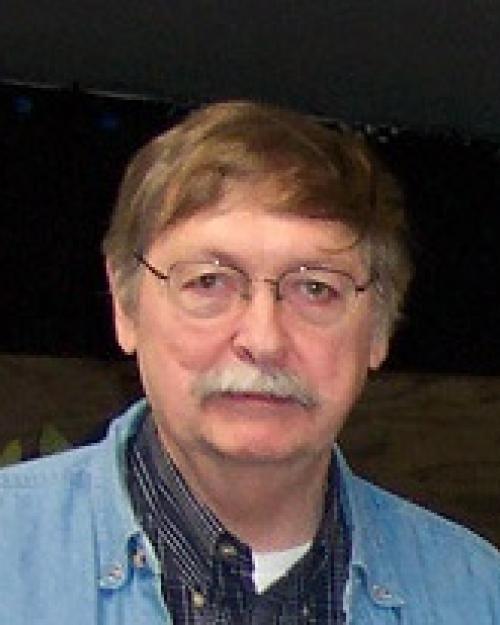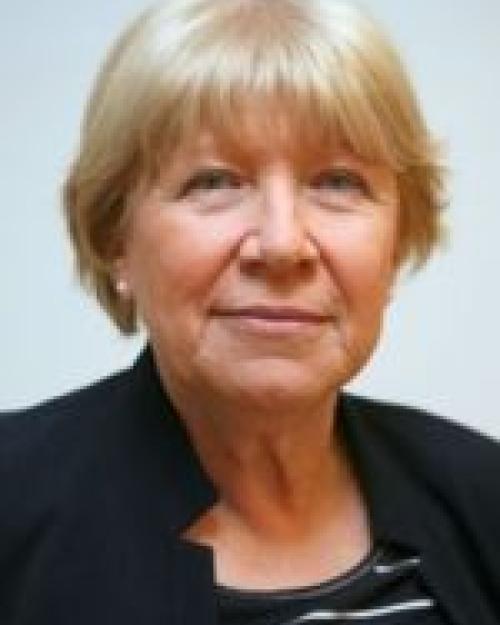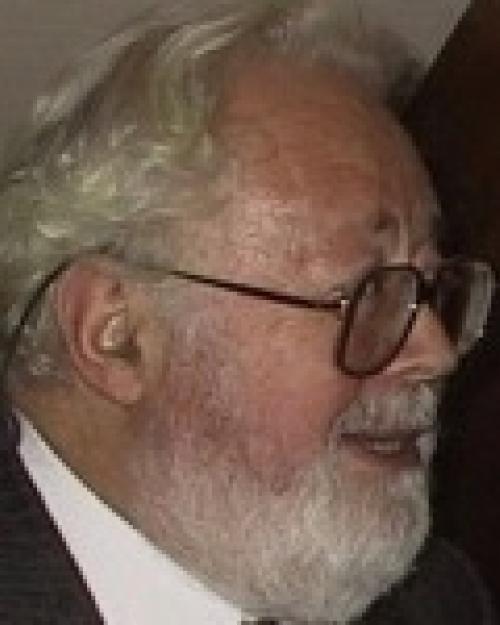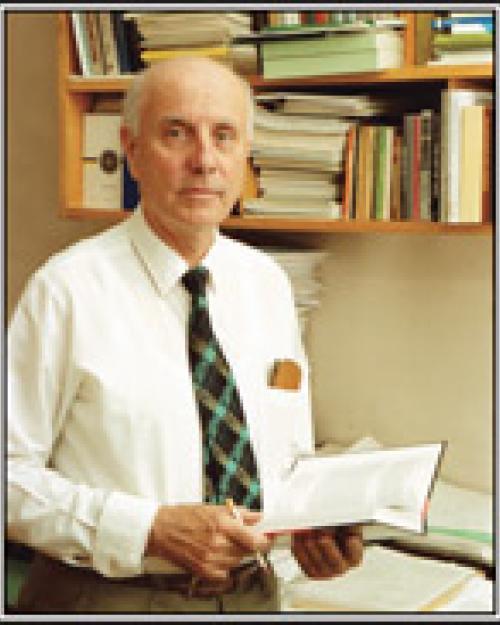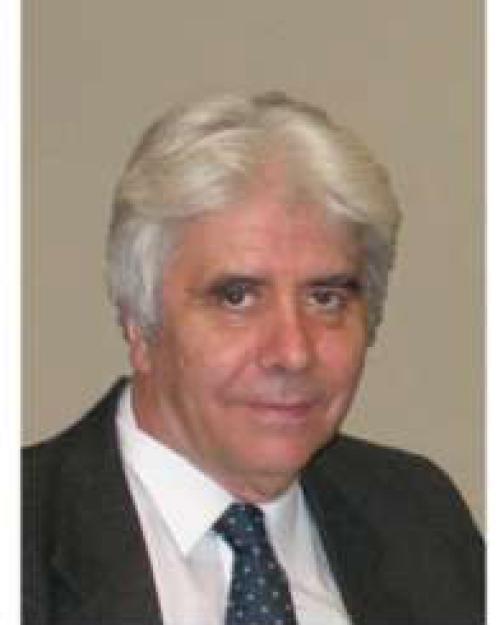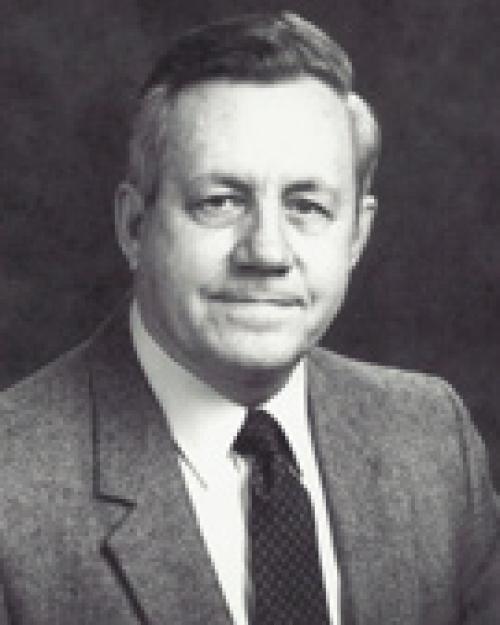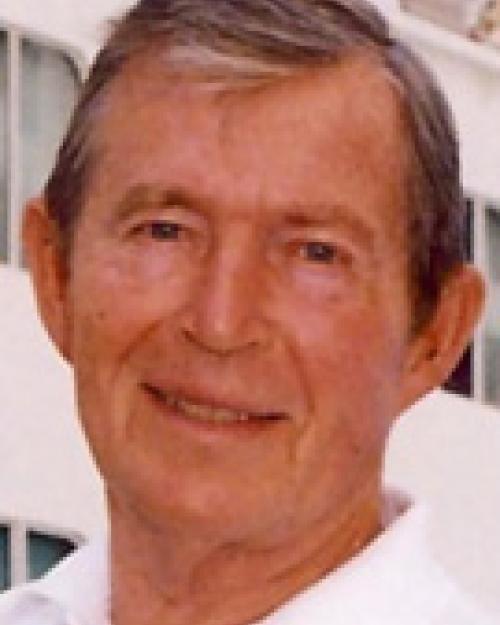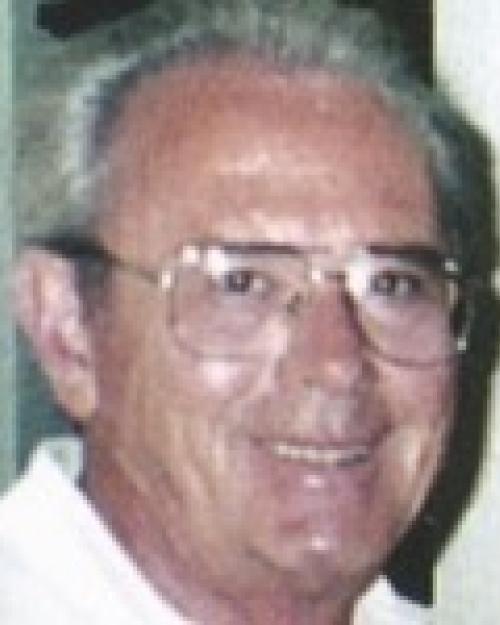-

Kenneth Lakin
-Kenneth Meade Lakin died at his home near Redmond, OR, November 24, 2012, after an extended battle with prostate cancer. He was born January 14, 1941, in Grand Rapids, Michigan to Mabel (Meade) and Harold Lakin. Ken grew up in Portland, MI, and graduated from the Univ. of Michigan with B.S. and M.S. degrees in Physics, Mathematics and Electrical Engineering and received his PhD in Applied Physics from Stanford University in 1969. Dr. Lakin was a faculty member at the University of Southern California from 1969 to 1980, where he conducted research on surface acoustic wave devices, thin film resonators, and piezoelectric film growth and characterization. From 1980 to 1989, he was affiliated with Iowa State University’s Ames Laboratory and founded the Microelectronics Research Center. He formed TFR Technologies in 1989 and acted as President and CEO while conducting research on thin film resonators, piezoelectric materials, filters, planar dielectric resonators, and numerical analysis of electromechanical resonators for microwave frequencies. Ken retired from TFR Technologies in 2005. He published more than 100 technical papers and has 21 U.S. patents in the areas of acoustic signal processing devices and materials research. Ken was a Life Fellow of the IEEE and received the W. G. Cady award in 2003. In 2010 he was the recipient of the IEEE Ultrasonics, Ferroelectrics, and Frequency Control Society Achievement Award for “his pioneering work on aluminum nitride (AlN), AlN for Bulk Acoustic Wave devices (BAW) and being first to develop Solidly Mounted Resonators (SMR-BAW) and coupled resonator filters for BAW.”

Marija Kosec
-Professor Marija Kosec passed away after a serious illness on 23rd December 2012. Almost everyone called her Marička, a popular Slovenian version of the biblical name. She was born on 5th September 1947 in Šinkov turn, about 20 km away from Ljubljana, Slovenia, at that time one of the republics of the former Yugoslavia. She graduated in 1970 in chemical technology, received her MSc in 1975 and her PhD in chemistry in 1982 at the University of Ljubljana, Slovenia, under the supervision of Professor Drago Kolar. The topic of her Master Thesis was lead-free piezoelectric sodium potassium niobate, which, after being almost forgotten for about 25 years, became extremely popular with the revived interest in environmentally-friendly lead-free piezoceramics. Her first journal paper eventually became the seminal paper on sintering of this still not thoroughly-understood material. Her doctoral thesis involved the study of phase relations in calcium uranate systems, and within this period she mastered the techniques of thermal analysis. Beginning in 1971 she was employed at the Jožef Stefan Institute, Ljubljana, Slovenia, and in 1997 – 2001 she was Head of the Ceramics Department. In 2002 she became Head of the Electronic Ceramics Department. She performed a part of her doctoral research (1979 – 1980) at the Institute for mineral engineering of RWTH Aachen, Germany. In 1993 she was a visiting scientist at the Ceramics laboratory of Ecole Polytechnique Federale de Lausanne (EPFL), Switzerland. In the years 2004 – 09 she was also leading the Slovenian Centre of Excellence, called “Materials for electronics of next generations and other emerging technologies”, and since 2009 the Centre of Excellence “Advanced Materials and Technologies for the Future” (NAMASTE). Her main research interests included synthesis and processing of ceramics in different forms: particles, solution-derived thin films, thick films, 2D or 3D structures, bulk electronic ceramics, predominantly ferroelectrics and piezoelectrics. Her contribution was in understanding and thus controlling the synthesis of application-important multi-component oxides, mainly perovskites, both in solution, in colloidal systems or suspensions, in powder mixtures by mechanochemical or classical solid-state reactions and processes. Using extensive processing knowledge and skills, her group synthesized transparent electro-optic ceramics. The research of lead-free complex perovskites resulted in the discovery of a new group of relaxors and highlyefficient piezoelectric K0.5Na0.5NbO3 single crystals. In chemical solution deposition of ferroelectric thin films she explained complicated reactions taking place in solution, which allowed the processing temperatures of the films to decrease. She focused on the integration of thick films on different substrates for ceramic microelectro- mechanical systems (MEMS). She understood the importance of the processing-properties relationship, and she could extremely successfully cross the barriers of different backgrounds and terminologies, which was evident from her numerous collaborations with researchers from complementary fields of physics and electronics. Furthermore, she endeavored to merge basic science with applied research and development and to strengthen links between academia and industry. She was author or co-author of more than 300 scientific papers in international journals and about 15 chapters in books. She gave more than 150 invited talks at international conferences and at different research institutions including Max Planck Institut, MIT, Tokyo Institute of Technology, and at important Japanese producers of electronic components including Murata, TDK, Panasonic and Toshiba. In 2000 she chaired the Electroceramics conference, in 2003 the European conference Processing of Electroceramics and in 2006 the 4th European Microelectronics and Packaging Symposium. In 1999 she was appointed Professor of Materials Science at the University of Ljubljana, with courses at the graduate and post-graduate level. She was active in the Jožef Stefan International Postgraduate School, since its establishment in 2004, as its vice-president. She was a visiting professor at Ecole Polytechnique Fédérale de Lausanne (EPFL), Switzerland, Shizuoka University, Japan, and for short periods at a number of other schools. She was Adjunct Professor at Xi’an Jiaotong University, China. She was an inspiring advisor to many PhD students at the University of Ljubljana, Jožef Stefan International Postgraduate School and University of Oulu, Finland. Marija served as a member or chair of many scientific committees or advisory bodies in Slovenia. In 2007 – 2009 she was the President of the Scientific Council of Jožef Stefan Institute. She was the only female member of the Academy of Engineering Sciences of Slovenia and in the period 2005 – 2006 its president. She was an Ambassador of Science of the Republic of Slovenia (2003), recipient of the Zois award, the highest national science award, in 2006 and of the Puh recognition for the implementation of research results in industry in 2009. She was active in COST, European Cooperation in Science and Technology framework, since 1991, the year, when Slovenia became an independent country. Since 1999 she was a member of the European Liaison Committee of the International Microelectronics and Packaging Society. In 2001 she became a member of the Ferroelectrics Committee at IEEE. In 2010 she received the Ferroelectrics Recognition Award, IEEE Ultrasonics, Ferroelectrics, and Frequency Control Society for her significant contributions to the processing science and technology of ferroelectric powders, bulk ceramics, thin and thick films. Besides her work, Marija enjoyed numerous activities. She was often hiking and skiing with her husband. She knew where and when to find mushrooms and how to cook or preserve them. She grew vegetables and flowers in her garden and prepared herbal teas. Her optimistic approach to life in general and to her research in particular, her sharp mind and her extensive background knowledge, her sincere interest in people and her generous heart will be sadly missed. The Electronic Ceramics Department and the UFFC community will remember her as a special person, able to keep the whole group together and, at the same time, to give to each member of the group individually the right motivation. No words can really explain what Marija was and what she did for science and for people. She was simply Marička. Barbara Malič and Tadej Rojac Electronic Ceramics Department Jožef Stefan Institute Ljubljana
Slovenia
Sigfrido Leschiutta
-Dr. Sigfrido Leschiutta, Metrological Expert, Time and Frequency Researcher, and Renaissance man On May 12 2011, World Metrology Day, the international metrology community and the Italian community in particular were dealt a harsh blow when they learned of the death of Professor Sigfrido Leschiutta, a man who was widely known in a variety of cultural fields. Metrology was his primary field of activity, with a special focus on the measure of time and frequency. Initially, he did most of his research work at the Istituto Elettrotecnico Nazionale Galileo Ferraris (IEN) – now Istituto Nazionale di Ricerca Metrologica (INRIM) –, and later on at the Politecnico di Torino, where he taught as Full Professor. Dr. Leschiutta was president of the IEN (1994-2002), member of the International Committee for Weights and Measurements, chairman of the Consultative Committee for Time and Frequency, Chairman of the Metrology Commission of the International Union of Radio Science, and member of the Accademia delle Scienze di Torino. Among the most significant moments in his scientific career is the first experimental verification of general relativity by comparing atomic clocks positioned at different altitudes relative to the geoid surface, one at Plateau Rosa and the other at the IEN, and the resumption of research activities on atomic frequency standards. He also devoted his energy to the resumption of research activities on atomic frequency standards, and construction and improvement of the national time scale, which is of fundamental importance to pure and applied science. Thus he brought a more precise and reliable time to the fields of transportation, trade, banking activities, and countless other aspects of our daily life. Later, he became interested in the new methods for clock synchronisation through satellite time transmissions. In this area of research he was frequently asked to work on projects at the European Space Agency and the Agenzia Spaziale Italiana, where he also served as member and chairman of the Agency’s Scientific Council, and organized a program of high resolution distance measurements to a satellite in a geostationary orbit. These highly significant studies also served as a basis for his teaching activities. Animated by his interest in the progress of scientific knowledge, he also succeeded in attracting to the IEN scientists of international renown, so that they might transfer their experience and knowledge to the Institute. He was on the engineering faculty of the Politecnico di Torino, where he taught measurement and metrology courses, and he also taught at other institutions. As long as his health sustained him, he gave lectures at the Doctoral School of the Politecnico di Torino. In 1976, 2000 and 2006, he was in charge of the high level course “Metrology and Fundamental Constants” held at the International School of Physics “Enrico Fermi” of the Societá Italiana di Fisica (SIF). Among his interests there are also music and the study of ancient musical instruments. He enjoyed doing manual work and constructed musical instruments, radio apparatus, carpentry works. Open minded and generous, he addressed the problems encountered in his various activities with sensitivity and a strong sense of responsibility, and always treated with spontaneous cordiality all the people he came in contact with.

Robert Blinc
-It is a melancholy honor to report the passing of Professor Robert Blinc, one of the world’s leading condensed matter physicists. Robert was born on October 31, 1933, in Ljubljana, Slovenia. He graduated from the University of Ljubljana in 1958 and completed his PhD the following year with a thesis on proton tunneling in ferroelectrics with short hydrogen bonds, supervised by Professor Dušan Hadži. This began his study elucidating the isotopic effect of deuterium in ferroelectric crystals and the development of the tunneling model of hydrogen bonded ferroelectrics (known as the Blinc–de Gennes model), which has remained an active research topic until the present. After a postdoctoral year spent in the group of Professor JohnWaugh at M.I.T., he was appointed as a professor of physics at the University of Ljubljana. Robert was known for both his experimental work and for theoretical models. He began the NMR laboratory at the Jožef Stefan Institute in Ljubljana, where he spent exactly fifty years applying magnetic resonance to ferroelectricmaterials, liquid crystals, incommensurate dielectrics, pseudospin glasses, relaxors, and fullerenes. As recently summarized by Prof. J. Dolinsek, Robert and coworkers predicted the phason Goldstone mode in helicoidal ferroelectric liquid crystals, discovered the relaxation mechanism via nematic order fluctuations in liquid crystals (the Pincus–Blinc model), detected solitons and phasons in incommensurate systems using NMR, determined the Edwards-Anderson order parameter in proton and deuteron glasses, developed the random bond–random field Ising model of proton and deuteron glasses (the Pirc–Tadić–Blinc model), developed the spherical random bond–random field model of relaxors, revealed the nature of ferromagnetism in organic ferromagnet TDAE-C60, and discovered the origin of the giant electromechanical effect in PMN-PZT relaxors via the existence of a critical end point. Robert also tried to help Slovenia with practical problems, and thus his work was not limited to academic physics with no application: He pioneered the application of NMR to the nondestructive oil-content measurements in plant seeds, the hardeningrate determination of cements and concrete by NMR and the TNT explosive detection by nitrogen NQR, where he is the holder of three patents. In the early stage of the double resonance technique, he succeeded in obtaining the first nitrogen NMR spectra in nucleic acids and peptides. Robert was unusually productive. His publications include more than 700 original research papers in international scientific journals, including three papers in Nature (1958, 1966, 2006), two in Science (both in 1996) and 47 in Physical Review Letters. His publications were cited more than 14,000 times in SCI. One of his most important achievements of Professor Robert Blinc is the book Soft Modes in Ferroelectrics and Antiferroelectrics (North Holland, 1974), written together with Boštjan Žekš. The book was translated into Russian (1975) and Chinese (1982) and belongs to the 600 most-cited scientific books in the world. Another of his books, written with Igor Mušević and Boštjan Žekš, The Physics of Ferroelectric and Antiferroelectric Liquid Crystals, was published in 2000 by World Scientific. His last book Advanced Ferroelectricity (Oxford Science Publications) appeared in August 2011, shortly before he passed away. Although his early ferroelectrics research emphasized hydrogen-bonded systems, more recently his work made breakthroughs on SrTiO3, particularly on O-18 isotopic forms, and on fluorides. Between 2008 and 2011 he published half a dozen papers with one of us (JFS) on fluoride multiferroics. He remained extremely active until his last months. As professor of physics at the University of Ljubljana, Robert Blinc was the supervisor for 35 PhD theses in the field of condensed matter physics and NMR spectroscopy. He was the founder and the head of the Condensed Matter Physics Department at the Jožef Stefan Institute for 47 years and a member (and vice-president in the years 1980–1999) of the Academy of Science and Arts of Slovenia. Robert Blinc maintained awide range of contacts with scientists worldwide. To mention only a few of them, he was a visiting professor at the University of Washington in Seattle; ETH Zurich, Switzerland; Federal University of Minas Gerais in Belo Horizonte, Brazil; University of Vienna in Austria; University of Utah in Salt Lake City; Kent State University in Ohio, Argonne National Laboratory, and several others. In the years 1990–1996 he was the president of the Group AMPER. He was a member of seven foreign Academies of Sciences and has received numerous national and international scientific prizes. Robert Blinc served on the Editorial Board of the international journal FERROELECTRICS from its founding in 1970 until his death. His wise counsel and great support will be sorely missed by the journal and its Editor, GeorgeW. Taylor. Robert also served for more than forty years on the International Advisory Committee on Ferroelectrics and was the President of the European Committee on Ferrolectricity (1986–1999). He was Chairman of the 4th European Meeting on Ferroelectricity held in Portoroz, Slovenia in 1979. Also, Robert played a key role in organizing the 3rd European Conference on Applications of Polar Dielectrics in 1996 and the 11th European Meeting on Ferroelectrics in 2007. Both of these very successful meetings were held at Lake Bled in his beloved homeland of Slovenia. Of course his lifewas not all work: He had a happy family life and was an avid skier and hiker right up until his last year. He was a first-class chess player and broadly educated—a renaissance man. He lived in a generation of Yugoslavs for whom politics was active life and not academic discussions, and he watched several regimes come and go with some personal role. Robert touched the careers and hearts of everyone with whom he interacted. He was, in the strictest sense, “a gentleman and a scholar.” The signatures below are from a representative group and include some with whom he did experiments and theory, and in one case, for whom he served as thesis examiner. However, our sentiments would be echoed by many more scientists from around the world whom he befriended and helped along the way. He is an outstanding example of the role one man can play in developing the science of a whole country. James F. Scott Department of Physics
Cavendish Laboratory Cambridge University
UK Naresh Dalal Florida State University
Tallahassee Florida USA Janis Dolinsek Jozef Stefan Institute University of Ljubljana Ljubljana
Slovenia Marija Kosec Jozef Stefan Institute
University of Ljubljana Ljubljana Slovenia Rasa Pirc Jozef Stefan Institute University of Ljubljana Ljubljana Slovenia George W. Taylor
Princeton Resources Princeton New Jersey
USA October 2011 Reprinted by permission of Taylor & Francis (http://www.tandfonline.com) from J.F. Scott, N. Dalal, J. Dolinsek, M. Kosec, R. Pirc and G.W. Taylor, “Obituary: Robert Blinc (1933-2011)”, Ferroelectrics 425, 1-3 (2011).
Norman F. Ramsey
-
Georgy (Georgii) Mansfeld
-Professor Georgii D. Mansfeld The time and frequency control community lost one of its most innovative leaders, Georgii D. Mansfeld, 71, who collapsed and died on his way to work on November 17, 2011. Georgii D. Mansfeld was born in Moscow in 1940. He received the PhD degree from the Moscow Institute of Physics and Technology (1970) and D.Sci. from the Institute of Radioengineering and Electronics (IRE) of the Russian Academy of Sciences for his work “Acoustoelectronic interaction in semiconductors in an AC electric field” (1984). Professor Mansfeld was the Head of the IRE Laboratory for many years. He taught many generations of students at the Moscow Institute of Physics and Technology. During the first years of his career, in the late 1960s, he experimented with microwave BAW generation using a high resistivity depletion layer (either natural, or induced) by a DC field effect close to the surface of a piezoelectric semiconductor. Later in his career, he made significant contributions to the experimental studies of amplification of acoustic waves in semiconductors by electron drift and a variety of acoustoelectronic phenomena in the frequency range 0.5 – 9.4GHz. He confirmed, experimentally, a new mechanism of acoustoelectronic nonlinearity, the so called “electron momentum” nonlinearity. This work was the first direct experimental observation of nonlinear Landau damping in electron plasma in solids. He conducted systematic studies of acoustic waves in polycrystalline ferrites, new piezoelectric materials (particularly quartz-like crystals) and microwave resonators. Professor Mansfeld was originator of microwave resonance acoustic loss spectroscopy of thin piezoelectric films and layers. Using this technique, original data on attenuation constants in thin crystalline layers, carbon nanotubes and Langmuir-Blodgett films at microwave frequencies were obtained. Professor Mansfeld was an active IEEE member, chairing the Russian chapter of the UFFC and participating in the Technical Program Committee of IEEE Frequency Control Symposia. He received the 2005 European Frequency and Time award and the 2011 IEEE Cady Award for pioneering research in physical acoustoelectronics and acoustics. Georgii is survived by his wife, Valentina, his daughter and two grandchildren. People knew Georgii as a kind, gentle and generous man who was always open to his friends, colleagues and students. His bright image will always live in our hearts.

Harry Peters
-Harry Peters, Hydrogen Maser Expert Harry Edward Peters, 87, died May 19, 2010 at the Hospice of West Alabama. Harry was an accomplished researcher, scientist, craftsman, and business owner and operator. Harry spent his youth in Rochester, MN, graduating from High School in 1941. He served in the United States Navy through both the Second World War and Korean Conflict with the rank of Chief Petty Officer before leaving the military with an honorable discharge. Harry then went on to earn a Bachelor of Science degree in Engineering Physics from the University of Washington, graduating Magna Cum Laude and entering the Phi Beta Kappa honor society. His passion was for Hydrogen Masers from the very beginning, working with such notables as Dan Kleppner, Howard Berg, Stuart Crampton, Norman Ramsey and others. His early product-development career was at Varian Associates,(Beverly, MA) with Bob Vessot and Jacque Vanier and many others at Varian. Harry moved to the National Aeronautics and Space Administration (NASA) at Goddard ultimately guiding a program essential to tracking and timing for manned moon missions and deep space planetary probes. He continually worked on making the H-maser an ultra-stable, reliable frequency standard for a variety of field applications. He authored an array of papers on H-masers and received numerous awards. Retiring from NASA in 1975, Harry moved to Tuscaloosa, Al and a couple of years later started Sigma Tau Standards Corporation, a research and development firm dedicated to production of time and frequency standards. Under his leadership, Sigma Tau perfected experimental designs for extremely precise and stable clocks based on hydrogen. Several words describe working with Harry, but one described it best. He was ‘PROLIFIC.’ He was a product of by-gone days when every mechanical drawing was handmade. Every part handcrafted. And there were thousands of hand drawings and crafted parts (the archive at just NIST proves it). The numerous drawings leave a deep, favorable and lasting impression on anyone in this field. Another word to describe Harry would be ‘PERSISTENCE.’ Above many other attributes, Harry succeeded in bringing the exceptional stability of the H-maser to commercial availability through Sigma Tau Corporation essentially with his own personal investment. While it’s one thing to be involved in the development of a new and intricate technology, it is quite another to risk a business and reputation to manufacture, deliver, and support that technology. Harry persisted. His designs evolved into what many regard as the first field-operational masers that were commercially available to government organizations, measurement institutes, and research laboratories. He made his maser as small as possible, his being in the ‘full-size’ category (using a TE011 mode rf cavity). Key to success of the Sigma Tau maser was refinement of an innovative auto tuner to minimize frequency drift. Essential to national and international time measurement, Global Navigation Satellite Systems like GPS, and other high technology navigation systems, these clocks are recognized as the most stable ever manufactured. It was so much more stable and reliable than other frequency standards that its modest size became a non-issue. On that point, Harry wanted his H-masers to appear smaller to the point that he photographed his prototype alongside the tallest secretary he could find.
Those of us who new Harry Peters are saddened by his passing. We pay homage to our friend and colleague, while reveling in his enormous contributions. EULOGY TO HARRY PETERS by David Howe, NIST, at the IEEE International Frequency Control Symposium, 2 June 2010.
Jack Saunders
-Jack Lee Saunders, Retired President of Saunders and Associates, Inc. Jack Lee Saunders, 81, beloved husband, father, grandfather, and uncle passed away peacefully at home with his family by his side on Friday, September 10, 2010. Jack was born in Council Bluffs, Iowa to Paul J Saunders and Lillian Elizabeth Banther Saunders on May 9, 1929. Following his mother’s death in 1933 the family moved to Colorado, where he later graduated in physics from Colorado State University. He attended Officers Candidate School and was appointed Second Lieutenant in the United States Army. As a physicist, Jack played an important role in the research and design to supply the communications and data systems for the Apollo Spacecraft missions, while working at Collins Radio in Newport Beach, California. In 1966, he moved his family to Scottsdale, Arizona. A year later, he founded Saunders & Associates, which provided consultation to the quartz crystal industry. Jack built the company into an electronic test equipment provider, shipping to divisions of virtually all of the major component, automotive, and electrical equipment manufacturers in the U.S. as well as to 50 countries. Jack received the IEEE C.B Sawyer Memorial Award in 1993 for “leadership in the development and manufacture of quartz resonator measurement equipment used throughout the industry”. At work and at home he was known as “J Lovable”. Jack retired to Williamsburg, Virginia in 2000, where he enjoyed his retirement taking cruises, traveling with his wife, and playing golf with friends in Kingsmill. He lived each day to its fullest, and his kindness and wisdom touched many lives. Jack is survived by his wife Pat Saunders, daughters Kris Wetherill and Kim Smith, granddaughter Alisha Wetherill, son-in-law Vince Smith, and his nieces and nephews. He will be greatly missed by all who knew and loved him. A private family service has been held. A celebration of his life will be planned for a later date. In lieu of flowers, memorial contributions may be made to: Heritage Humane Society, 430 Waller Mill Road, Williamsburg, VA 23185 (www.heritagehumanesociety.org) or the American Cancer Society (for lung cancer), PO Box 22718, Oklahoma City, OK 73123 (www.cancer.org).

David Morgan
-David Picton Morgan, IEEE Senior Life Member, was born in Essex, England in 1941 during the throes of WW2. After graduating in physics from St Catherine’s college, Cambridge University in 1962 he conducted research on Surface Acoustic Wave (SAW) devices at University College, London, gaining his MSc in 1966 and PhD in 1969. He spent the year from 1970 to 1971 at Nippon Electric in Japan, and 1971 to 1977 at Edinburgh University, Scotland, again researching SAW devices. In 1977 he joined the Plessey company, Caswell, Northamptonshire, England. At Plessey he led the team developing SAW devices for both civilian and military applications. During this time he developed the theory of SAW transduction and was encouraged to write a text book on the theory and practice of SAW devices which has become a classic in the field. This was published in 1985 while a second edition appeared in 2008. David spent almost his entire career in SAW devices, forming the company “Impulse Consulting” after the inexplicable closure of Plessey’s SAW research activity in 1986. For the rest of his life David consulted on SAW devices for numerous companies worldwide, and was widely respected as an International expert, enthusiast, and teacher and lecturer on the subject. As well as writing his book, David developed extensive software modelling suites and continued to publish his findings regularly, with a total of 100 publications and 4 patents. He died at his home in Northampton on 10th March 2010 of lymphoma, still actively engaged on his beloved SAW devices and with plans for future international collaborations. More details of David’s work:
The existence of Surface Acoustic Waves on solids was first proved theoretically by Lord Rayleigh (also from Essex, England) in 1885. However it was not until the 1960’s that the efficient and selective generation of SAW on piezoelectric crystals was demonstrated and analysed by workers in Berkeley and Stanford Universities in California. There followed an explosion of interest worldwide in such devices and their applications. David’s introduction to the subject came from his research on dispersive delay lines for use in radar under Dr Eric Ash at University College, London. David was the first westerner to work at Nippon Electric in Japan, where he initiated a research programme into the modelling and fabrication of interdigital SAW devices. At Edinburgh University David worked as Research Fellow with Professor Jeff Collins on various aspects of signal processing using SAW devices and developed an early SAW convolver for use as a programmable matched filter. David (like the rest of the SAW community) was always keen on publishing the virtues of analogue SAW devices in the face of growing digital competition. In 1976 he edited “Key papers on Surface Acoustic Wave Passive Interdigital Devices”, IEE REPRINT SERIES 2. (ISBN:0 901223 82 4.) which contains sections describing his own work in Edinburgh.
In 1977 David joined the Plessey research centre at Caswell, Northamptonshire, in a team that at various times included Bob Milsom, John Deacon, and other SAW notables. At Plessey David worked on the theory of SAW transduction including the detailed behaviour of the charge distribution in interdigital transducers and its effect on harmonic responses. The devices investigated included bandpass filters, especially commercial TV IF filters. We believe that Plessey was the first company in the world to manufacture such devices commercially and it later formed Signal Technology, a joint SAW company with Andersen Labs, USA. Another device that David developed was the SAW dispersive delay line for use in various Plessey radars, including the extremely-demanding nonlinear disperser required for the state-of-the-art Plessey AR3D radar. At this time Plessey was also part of the collaborative UK MOD SAW program run from RSRE, Malvern. David undertook such MOD-funded research on the SAW convolver, where he introduced a variant employing dispersive transducers, and also developed the theory of a 2-dimensional impulse response. David’s other principal achievement while at Plessey was publishing in 1985 his book which formed a succinct account of the growing breadth of interest and applications of SAW devices: “Surface-Wave Devices for Signal Processing” Elsevier, ISBN: 0-444-42511-X. This includes much of David’s own theoretical work and was translated into Russian in 1990 by Sergei Zhgoon. It remained the classic work in the field until its recent second edition: “ Surface Acoustic Wave Filters” Elsevier 2008, ISBN: 978-0-1237-2537-0. David’s work at “Impulse Consulting” is, of course, commercially sensitive but he consulted widely and undertook lecturing tours in many countries including USA, Russia, China, Finland, Japan, Korea and Brazil, where his authority and personal qualities were always highly regarded. In 1992 David participated in the “International Symposium on SAW devices for mobile communications” a select meeting of SAW experts organised by the Japanese prior to the launch of SAW devices into the massive mobile communications market. During this time (1986-2010) he continued to publish his findings, often jointly with collaborators, and David had plans for at least two further international collaborations. David’s private life: In his private life David was an enthusiastic and experienced skier and, like so many physicists, David was an accomplished musician. He studied piano from the age of 7 and as a schoolboy had a scholarship to attend the Royal College of Music, where among several things he played timpani in the orchestra. He also sang tenor in a number of choirs and could sing difficult scores at sight. It was during his time at Cambridge that his interest in the organ began, each of the colleges having a fine organ in their chapels. Later he attended masterclasses with the internationally renowned organists Anton Heiller and Marie-Clare Alain, and had lessons with Flor Peeters. He obtained the Royal College of Music’s diploma in organ playing in 1964. He had played for services in several cathedrals including Ely, Peterborough and St David’s, and had given a number of solo recitals. David will be greatly missed by his sister, Helen and her family, numerous friends and colleagues in the UK and abroad, and his local church where he was organist.
William N. Lawless
-The international ferroelectrics community lost a long-time and productive member on Christmas Day 2009 when William N. (Bill) Lawless died. Bill was born in Denver, Colorado in the USA in 1936. He graduated in Metallurgical Engineering in 1959 from the Colorado School of Mines, and went on to earn a Ph.D in physics at the Rensselaer Polytechnic Institute in Troy, New York. His thesis was on ferroelectric domain walls. Dr. Lawless then spent a year as a Postdoctoral Fellow at ETH in Zurich, Switzerland where he continued his research on ferroelectric materials in Professor Werner Kanzig’s and Professor Hans Granicher’s laboratories. At the end of 1965, Bill returned to the USA to take up a position at the recently established Research and Development Laboratories of Corning Glass in Corning, New York. At Corning, Bill worked on ferroelectric glass ceramics and the low-temperature physics of ferroelectric and relatedmaterials.Out of thiswork came the important discovery of the high specific heat ferroelectric ceramics. In 1981, Bill and Dr. C. Fred Clark founded CeramPhysics, Inc., an independent research and product development company located in Westerville, Ohio. Bill served as President of CeramPhysics from its founding until his death. Over the last 28 years, CeramPhysics has developed a variety of novel technologies building on some of the basic research done by Bill at Corning on high specific heat ferroelectric ceramics. These technologies have resulted in the development of a solid state proportioning valve for natural gas, minature solid state oxygen and NOx sensors, capacitive energy storage at 77K, a solid state oxygen generator, a solid state nitrogen purifies, a honeycomb fuel cell, electrocaloric refrigeration, and improved insulation for superconductors. Bill was an original thinker, widely read and able to see potential synergisms across disparate fields. He was especially creative at seeing new uses for unusual properties of ceramics. This inventiveness led to 38 patents. His publications, which numbered over 140, were coauthored with a large number of colleagues from many countries. They included such well known ferroelectric scientists as A.S. Bhalla, W.W. Cao, C.F. Clark, L.E. Cross, R.C. De Vries, J. Fousek, A.M. Glass, H. Granicher, U. Hochli, S.K. Kurtz, T. Nakamura, K.A. Panchyk, R.K. Pandy, G.A. Samara, W.A. Schulz, V.H. Schmidt, N. Setter, T.R. Shrout, A. Sternberg and M. Takashige. Bill investigated in his career the ferroelectric, dielectric, thermal and superconductive properties of a wide variety of materials in single crystal, ceramic and glass forms. In the early years of his career his work was focused on physics, but later it became more application oriented. Bill served on the Editorial Board of Ferroelectrics from 1983 to his death in 2009. He was a long-time member of the IEEE Ferroelectrics Committee and served as Chairman of the 1981 International Symposium on Applications of Ferroelectricity. Bill was widely respected in the ferroelectrics community and it was common for other researchers to seek him out. Bill resonated with other creative people and the ideas that came from these interactions often led to new inventions and fruitful interactions and creative insights. Bill enjoyed reading in many fields and was well-versed in current events. He had a wide circle of friends and was always ready to hear or tell a new joke. One of his most outstanding traits was his unusually deep well of common sense which he always attributed to his Irish heritage, especially though his father. Bill is survived by his widow Nancy and three daughters, Laurie, Denise, and Therese. C. Fred Clark CeramPhysics Columbus Ohio USA George W. Taylor Princeton Resources Princeton New Jersey USA C. Fred Clark and George W. Taylor, “Obituary: Dr. William N. Lawless (1936-2009)”, Ferroelectrics, Volume 396, pp. 1-2 (2010). (Published by Taylor & Francis Ltd, http://www.informaworld.com, reprinted by permission of the publisher)
Pagination

